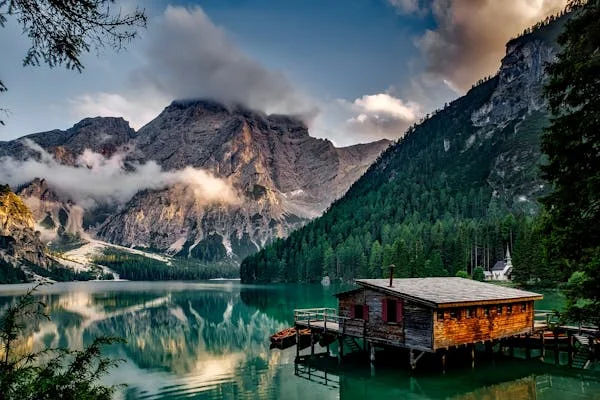Introduction
Mountain valleys nyt are among Earth’s most captivating landscapes, offering a harmonious blend of natural beauty, ecological significance, and cultural heritage. These low-lying areas nestled between mountains have been the cradle of civilizations, sources of inspiration for artists, and sanctuaries for diverse flora and fauna. This comprehensive exploration delves into the formation, types, notable examples, ecological importance, human interactions, and conservation efforts related to mountain valleys.
Formation of Mountain Valleys
The genesis of mountain valleys is a testament to the Earth’s dynamic geological processes. Their formation primarily involves:
- Tectonic Activity: Movements of the Earth’s crust can create depressions between mountain ranges, leading to the formation of valleys.
- Erosion: Over millennia, rivers and glaciers carve through rock, sculpting valleys into various shapes.
Fluvial Processes
Rivers play a pivotal role in valley formation through continuous erosion. The stages include:
- Downcutting: Rivers erode the riverbed, deepening the valley.
- Lateral Erosion: As rivers meander, they erode the banks, widening the valley.
- Headward Erosion: Erosion at the river’s source extends the valley lengthwise.
Glacial Processes
Glaciers, with their immense weight and movement, reshape landscapes by:
- Plucking: Glaciers pull away chunks of rock from the valley floor.
- Abrasion: Embedded rocks in glaciers grind against the valley walls and floor, smoothing and deepening them.
Types of Mountain Valleys
Mountain valleys exhibit diverse forms based on their formation processes:
V-Shaped Valleys
- Characteristics: Steep sides converging at a narrow bottom, resembling the letter ‘V’.
- Formation: Result from river erosion, typically in youthful stages of landscape development.
- Examples: The Grand Canyon in Arizona, USA, showcases a profound V-shaped valley carved by the Colorado River.
U-Shaped Valleys
- Characteristics: Broad, flat floors with steep, straight sides, forming a ‘U’ shape.
- Formation: Sculpted by glacial activity during ice ages.
- Examples: Yosemite Valley in California, USA, is a quintessential U-shaped valley formed by glacial erosion.
Hanging Valleys
- Characteristics: Elevated valleys perched above the main valley, often leading to waterfalls.
- Formation: Created when smaller glaciers merge with larger ones, leaving the tributary valley ‘hanging’ above the main valley floor.
- Examples: Bridalveil Fall in Yosemite National Park cascades from a hanging valley.
Notable Mountain Valleys Around the World
Mountain valleys across the globe offer unique landscapes and cultural significance. Here are some remarkable examples:
Kaaterskill Clove, New York, USA
Located in the eastern Catskill Mountains, Kaaterskill Clove is a deep gorge formed by Kaaterskill Creek. The valley is approximately 2,500 feet deep in places and has been a source of inspiration for artists of the Hudson River School. Notable features include:
- Kaaterskill Falls: A 231-foot waterfall, one of the highest in New York State.
- Historical Significance: The area was popular among 19th-century artists and tourists, with several mountain houses and hotels constructed to accommodate visitors.
Lauterbrunnen Valley, Switzerland
Nestled in the Swiss Alps, Lauterbrunnen Valley is renowned for its dramatic cliffs and numerous waterfalls. Key highlights include:
- Staubbach Falls: Plunging nearly 300 meters, it’s one of the highest free-falling waterfalls in Europe.
- Trümmelbach Falls: A series of glacial waterfalls inside the mountain, accessible through tunnels and platforms.
Sacred Valley, Peru
Once the heartland of the Inca Empire, the Sacred Valley stretches along the Urubamba River. It is characterized by:
- Archaeological Sites: Including Machu Picchu, Ollantaytambo, and Pisac.
- Agricultural Terraces: Ingenious farming terraces that demonstrate advanced Incan agricultural practices.
Hunza Valley, Pakistan
Situated in the Gilgit-Baltistan region, Hunza Valley is surrounded by towering peaks of the Karakoram range. Notable aspects include:
- Spectacular Scenery: Panoramic views of snow-capped mountains like Rakaposhi and Ultar Sar.
- Cultural Richness: Home to the Burusho people, with unique traditions and languages.
Ecological Importance of Mountain Valleys
Mountain valleys are ecological hotspots, supporting diverse habitats and species. Their significance includes:
Biodiversity Reservoirs
- Flora: Varied microclimates allow for a range of plant species, from alpine meadows to dense forests.
- Fauna: Valleys provide habitats for numerous animal species, including endemic and migratory species.
Water Resources
- Watersheds: Valleys often house river systems that supply fresh water to surrounding regions.
- Glacial Meltwater: In some valleys, glaciers feed rivers, crucial for ecosystems and human use downstream.
Climate Regulation
- Carbon Sequestration: Forested valleys act as carbon sinks, mitigating climate change.
- Microclimates: Valleys can create unique weather patterns, influencing local agriculture and biodiversity.
Human Interaction with Mountain Valleys
Throughout history, mountain valleys nyt have been focal points for human settlement and activity due to their resources and strategic locations.
Early Settlements
- Agriculture: Fertile soils and access to water made valleys ideal for farming.
- Protection: Natural barriers provided by surrounding mountains offered defense against invasions.
Cultural Significance
- Spiritual Sites: Many valleys are considered sacred and host religious sites and rituals.
- Artistic Inspiration: The natural beauty of valleys has inspired countless works of art, literature, and music.
Modern Development
- Tourism: Scenic valleys attract tourists, bolstering local economies.
- Urbanization: Some valleys have transformed into urban centers, balancing development with ecological preservation.
Conservation of Mountain Valleys
The ecological and cultural value of mountain valleys nyt necessitates concerted conservation efforts.
Threats to Mountain Valleys
- Climate Change: Rising temperatures can lead to glacial melt and altered ecosystems.
- Deforestation: Logging and land conversion threaten biodiversity and increase erosion.
- Pollution: Industrial activities and tourism can introduce pollutants to pristine environments.
Conservation Strategies
- Protected Areas: Establishing national parks and reserves to safeguard ecosystems.
- Sustainable Tourism: Promoting eco-friendly tourism practices that minimize environmental impact.
- Community Engagement: Involving local communities in conservation efforts ensures the preservation of cultural heritage and natural resources.
Conclusion
Mountain valleys nyt are indispensable treasures of our planet, embodying the intricate interplay between geological forces, ecological systems, and human cultures. Their preservation is paramount for maintaining biodiversity, cultural heritage, and natural beauty for future generations. By understanding and appreciating the multifaceted roles of mountain valleys, we can foster a deeper connection to these landscapes.
Frequently Asked Questions
How Are Mountain Valleys Formed?
Mountain valleys are primarily formed through tectonic activity, river erosion, and glacial movement over thousands of years.
What Are the Different Types of Mountain Valleys?
The main types include V-shaped valleys (formed by rivers), U-shaped valleys (shaped by glaciers), and hanging valleys.
Why Are Mountain Valleys Important for Biodiversity?
Mountain valleys support diverse ecosystems, acting as habitats for unique plant and animal species while regulating local climates.
What Are Some Famous Mountain Valleys Worldwide?
Notable examples include Kaaterskill Clove (USA), Lauterbrunnen Valley (Switzerland), Sacred Valley (Peru), and Hunza Valley (Pakistan).
How Can We Protect Mountain Valleys?
Conservation efforts include establishing protected areas, promoting sustainable tourism, reducing deforestation, and engaging local communities.






